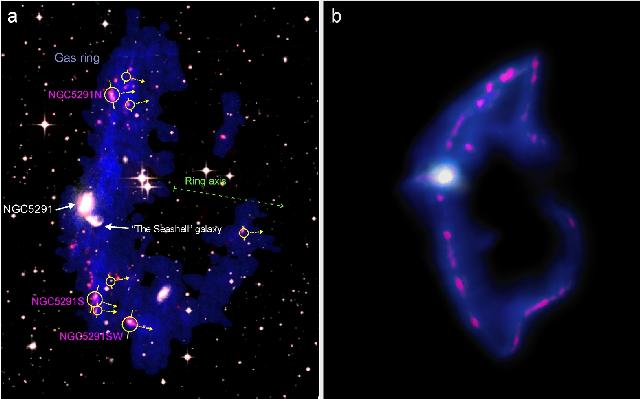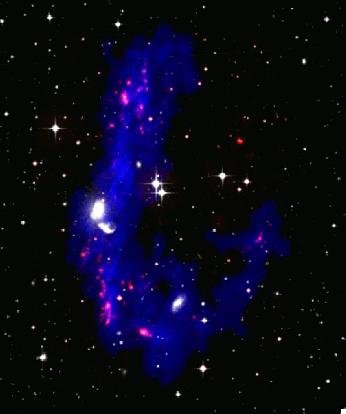EMBARGOED For Release 2:00 p.m., EDT, Thursday, May 10, 2007
Graphics: "Missing Mass" in Dwarf Galaxies

Images from computer simulation of the collision of NGC 5291 with
another galaxy 360 million years ago. Numbers are millions of
years, with the collision time as zero. This simulation shows
the collision causing material from the spiral galaxy to be ejected
outward into a ring-like structure similar to that seen in the
telescopic images below. The recycled dwarf galaxies are the
red-purple objects in the ejected material.
Click on image for larger file (127 KB).
CREDIT: F. Bournaud et al., CEA-CCRT.

Left: Composite radio/optical/ultraviolet image of NGC 5291 and its
surroundings, including the debris propelled outward by collision
with another galaxy. Blue is atomic Hydrogen observed with the VLA;
white is optical; red is ultraviolet (Galex satellite). Red labels
mark the dwarf galaxies studied in this research.
Right: Detail of image produced by computer simulation of the
galactic collision, showing debris ring and condensations that
became star-forming dwarf galaxies.
Click on image for larger file (382 KB).
CREDIT: P-A Duc, CEA-CNRS/NRAO/AUI/NSF/NASA.

Composite multiwavelength image without labels.
Click on image for large file (389 KB).
MOVIE of computer-simulated galaxy collision.
(External Link)
